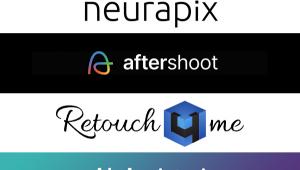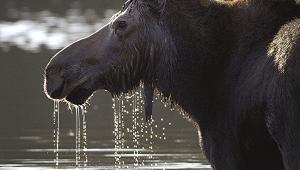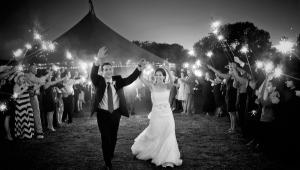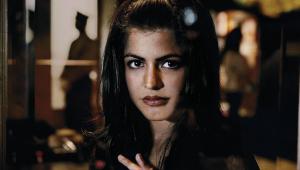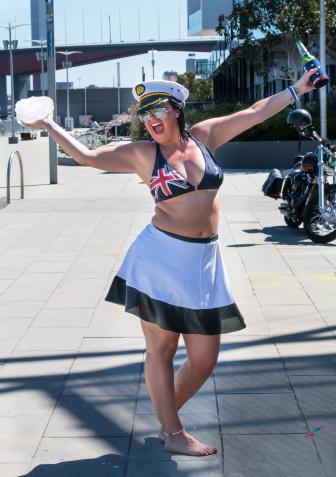Bohm & Marrazzo Bring Digital To Kids And Pets; Shooting Indoors And Out Requires A Flexible Approach
Twenty years in business together, the team of Bohm-Marrazzo (Montclair, New
Jersey-- www.bohm-marrazzo.com)
comes well equipped to tackle the challenge of photographing kids and animals
for their advertising clients. Experience has taught them to incorporate these
highly animated subjects into the picture to make an even more impactful statement
about a product, service, or institution and appeal to the consumer on a more
personal level. They've developed this into a niche market, even though
they continue to photograph people and products without these lively "accessories."
Being a well-equipped studio means many things when it comes to photographing
children, pets, and quasi-wild animals. Aside from having honed an understanding
of what makes kids and animals tick, they've fine-tuned the techniques
that go into successfully capturing telling moments with their subjects--something
their advertising clients appreciate with repeated business. And part of that
success revolves around choosing the best gear for the job.
 |
|
|
Tools Suited To The Task
When Linda Bohm and Gerard Marrazzo shot film, they worked with a Hasselblad
553ELX and Canon EOS-1N, as well as a Sinar 4x5 and 8x10. The view cameras come
to the fore when the subject is strictly still life and small product. After
moving into digital, a Kodak Pro back replaced the film backs, and was itself
replaced by a Leaf Valeo 22, for their existing Hasselblad and Sinar cameras.
To support these various cameras in the studio they employ both Gitzo and Foba
tripods, as well as Foba camera stands. The heads used are Manfrotto 3D and
Foba ball heads.
A Canon EOS-1Ds Mark II replaced the 1N, and will soon be supplanted by the
Mark III. The Canon comes to the fore when shooting kids and animals in the
studio, but especially outdoors and on location. For the Canon, the 24-105mm
IS replaces a 24-70mm (both L-series), but the 70-200mm f/2.8L continues to
dominate. "We'll use the Canon because kids and animals are always
moving, and it's just easier with this camera's more responsive
autofocusing system," Marrazzo points out. Having said that, there are
no hard and fast rules as to which camera, Hasselblad or Canon, dominates in
every situation. Many factors come into play. As Bohm remarks, "If the
image is not going that large, we can deal with the 16-megapixel capture of
the Canon."
Color Management Is Of Vital Importance
We can't overlook the workstations in this Macintosh-based studio. They
have three Quad-Core G5s; seven computers in total. The monitor used for critical
color work is a high-end EIZO, which they calibrate using GretagMacbeth's
Eye-One Pro. They print on an Epson 4800 with an ImagePrint RIP. And they have
an extensive back-up system involving various RAID drives, storing onto Kodak
archival DVDs and other external hard drives.
Marrazzo adds: "I feel that the closer we can get during capture, the
less work we have to do in the end, and that also leads to better results overall."
With the Leaf back, they use the Leaf software's color-balancing tool
and shoot a gray card once they have the final lighting setup. For the Canon
they'll take a color temperature reading with a Broncolor color meter
and input that Kelvin temperature into the camera. Given the variety of reflectors
and related light modifiers that affect color temperature, the color meter is
in constant use, along with a Macbeth ColorChecker.
And one thing is practically a given, tethering the camera to a computer, whether
on location or in the studio. They feel it produces a more inviting environment
and facilitates on-site review of the images with the client. They will also
use a webcam for clients who can't make it to a shoot. Clients log in
to a secure URL to watch and art direct as if they were on set.
 |
|
|
What Light Through Yonder Window...?
When it comes to lighting, Broncolor often takes center stage in their 3200-square-foot
studio (a mix of 3200 and 1600 ws packs) and on location, but a legacy light
from the past, a Lucifero Window Light, continues to hold its own. "We
use this Italian-made light a lot for portraiture," notes Marrazzo. "It's
a large softbox, with a metallic reflecting surface, and it produces an unusually
nice light." They keep the last remaining replacement flash tube safely
tucked away. When that goes, so does the Lucifero. We should add that lights
are triggered remotely using a PocketWizard.




